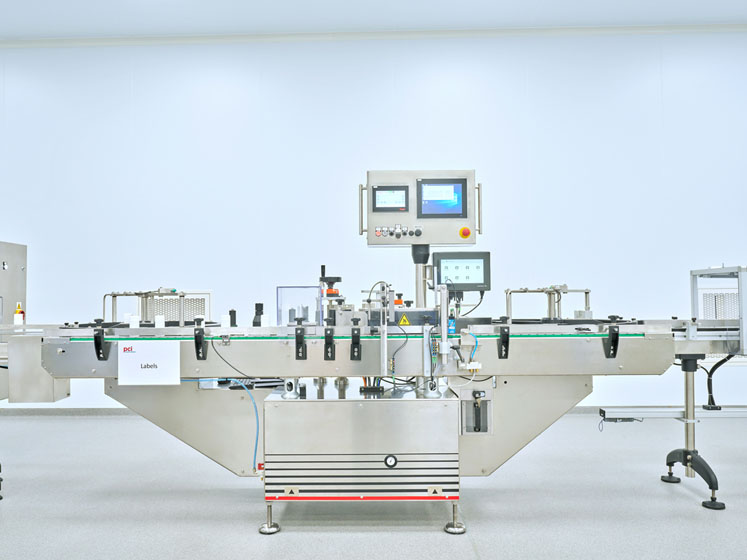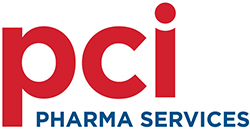Yet, designing pharmaceutical packaging with an understanding of manufacturability, regulatory and print requirements surrounding artwork and brand creation is critical for successful commercialisation and should be considered as an integral part of early stage product development. Matt Kahle, Senior Director, Services, and Victor Gherdan, Associate Director Package Design, from PCI Pharma Services report.
If looking to outsource, choosing the right CDMO packaging partner with in-house packaging design and artwork capabilities to complement the packaging process is key to ensuring design for manufacturability (DFM), compatibility with packaging equipment, adherence to regulatory requirements and printing specifications, minimising labour and commercialisation costs and, ultimately, avoiding potential costly project delays.
Three quick tips for successful packaging and artwork creation
Understand the limitations of third-party agencies: A common occurrence is when a client selects a third-party design agency for their package design without understanding the potential risks.
The design may fit the end-user specification and desired aesthetic but fails to run efficiently on industry standard packaging equipment when it’s time for commercial launch.
In addition, companies may also find out that the artwork itself is not compliant with industry standards or isn’t properly formatted for the printing process. This results in costly delays and, potentially, the need to procure additional and often expensive equipment.
Avoid over-customisation: One of the most prominent considerations for package design is patient centricity, which incorporates patient needs, functionality and supports compliance with the treatment regimen.
However, there is growing awareness that patient-centric design should not come at the expense of customising packaging designs to the point whereby medicines cannot be packed using readily available equipment or the need for new equipment that can only be used for a single design.
Start planning earlier in development: Considering packaging design earlier in the product lifecycle will help companies to understand and anticipate the potential budget or assembly constraints for a given package design and address them before manufacturing begins.
With earlier development, the final commercial pack will ultimately adhere to all end-user specifications, fit seamlessly onto production lines and ensure the fastest route to market.
Achieving patient-centric design without compromising manufacturability
If a product’s packaging design is aligned with patient-centric priorities — but is not optimised for the equipment the packaging process is going to run on — it can lead to upfront capital costs, modifications to existing equipment and higher labour and commercialisation costs, ultimately resulting in higher overall manufacturing costs.
This is when the concept of DFM comes into play. The same can be applied to artwork creation; it may have been designed with good intentions, but if it is not correctly formatted for the inline printing process, or contains inaccuracies with respect to colours, translations or product information, it can lead to costly delays to reconfigure for prepress and retrieve the necessary data that needs to be applied.
One approach to designing with manufacturability in mind is to lift the rigid requirements that specify the exact materials to be used in packaging.
When CDMOs are locked into these types of vendor agreements as part of standard operating procedures, it diminishes their capacity for flexibility and respond in a timely manner to supply chain issues that may impact lead times.
Allowing CDMOs to source materials instead of requiring specific brand names will allow a level of flexibility that can help to accelerate timelines. Another approach is early consultation between the CDMO and the client on their pharmaceutical packaging projects.
It is the CDMO’s responsibility to guide and partner with their clients throughout their commercialisation journey. Developing a design without having the product process in place can have severe cost implications.
Achieving DFM requires a robust cross-functional network of designers, engineers, operational teams, graphics specialists, component vendors and the client working collaboratively.
The primary objective for PCI is to develop a design that is suitable for the patient and the market in the most time and cost-efficient way. PCI has a robust, diverse and dynamic workflow with in-house design centres situated adjacent to its packaging operations.
The cross-functional team understands the impact that design can have on the packaging operation and vice versa, meaning that when it comes to putting robust workflows together there is streamlined communication and the appropriate systems in place to ensure a seamless and efficient solution.
PCI uses its expertise in design, engineering, operations, quality and other disciplines to meet both clients’ design needs and their full product and commercialisation requirements. One of PCI’s key standard offerings is design conceptualisation; here, the team of experts can develop concepts from inception and offer consultation services throughout the commercialisation process.
The team is highly skilled and uses software and equipment capabilities to develop highly innovative, complex and sophisticated designs to meet the client and market needs.
Simultaneously, PCI can provide creative solutions for branding, conceptual artwork and regulatory submission mock-ups. This offers a level of simplicity when it comes to vendor management and provides the assurance that the labelling output meets manufacturing standards, which will remove any unnecessary hurdles and ultimately accelerate the speed to market.
Applying DFM to existing packages
Another standard offering from PCI is design optimisation, whereby existing commercial designs can be further modified to achieve cost savings, a more sustainable solution or other key client goals.
PCI’s prototype lab is equipped to create commercial-grade samples that are representative of the complete primary and secondary packaging solution.

Prototype creation can be scaled from small to large-scale samples and can be developed for various functions including, but not limited to, proof-of-concept to support design conceptualisation, market research, human factor studies, shipping and distribution studies, and child resistant studies.
Owing to the readily available materials inventory, in-house tooling creation and staff to support the operation, lead times are minimal. PCI also has the subject matter expertise and third-party testing partnerships to manage any testing services that may be required by the client.
Embedding sustainability to reduce the carbon footprint
Just as planning for manufacturability early in the product development cycle ensures that packaging design is compatible with available equipment and cost considerations, so does planning for sustainability to reduce the product’s overall carbon footprint.
Companies often get derailed because of the scale of planning that sustainability requires, so it is vital to have a knowledgeable CDMO partner to offer guidance along the way to achieve these goals.
Sustainability considerations should not only encompass secondary packaging, but primary packaging as well.
To make addressing sustainability across the board more digestible, organisations can benefit from breaking it into smaller steps, such as understanding what their largest materials usage is and which products in their portfolio generate the largest carbon footprint.
PCI has implemented state-of-the-art software to analyse the sustainable factors of pharmaceutical packaging down to individual components. By having a complete view of which specific elements of the packaging contribute most to the item’s carbon footprint, clients can make more informed decisions.
Sometimes something small can have a compounding impact. Whatever approach to embedding sustainability companies choose, it does not have to involve a complete package redesign or another drastic change; a partner such as PCI will work with you to develop the most appropriate solution.
Conclusion
Pharmaceutical and biopharmaceutical companies looking to optimise packaging DFM are dealing with multiple trends, requirements and end-user expectations.
Companies can benefit by eliminating vendor agreements that place rigid limitations on material selection that increase lead times, while keeping costs manageable and include sustainability considerations throughout the packaging process.
To further accelerate project timelines, companies should consider tackling artwork and brand simultaneously as part of the package development process.
To achieve these objectives, it is crucial to move packaging considerations as far upstream in the product development process as possible and begin those conversations sooner rather than later.
Partnering with a CDMO packaging solutions provider that has subject matter expertise, a broad network of internal and external resources and a thorough understanding of the commercialisation journey can ensure that these important considerations take place at the right time.

